Poisonous snakes, venomous spiders, ticks, and bison are some of the deadliest and most dangerous animals in Kansas, and it will be best not to get close to them.
Over 90% of Kansas are farmlands, thanks to its vast plains, but you can find hills with pastures and forests in the northeast.
While various animal species exist in their natural habitat within Kansas wildlife, some of them are also deadly.
Therefore, here is a walk-through of the most dangerous animals in the Wheat State and some safety tips for the wildlife in the area.
What are the Most Dangerous Animals in Kansas?
1. Hornets

- Scientific Name: Vespa
- Classification: Insect
- Habitat: Parkland, gardens, woodlands
- Diet: Omnivore
- Conservation Status: Not extinct
You would most likely be fascinated by the hornet’s gold and dark brown stripes.
However, these good-looking wasp subsets are among the world’s most dangerous stinging insects.
While it is most unlikely for a hornet to sting unprovoked, it can be harmful when one decides to do so because hornets are giant and release more venom per sting than any other stinging insect.
A hornet’s venom is more painful than any other wasp and could be fatal if there are allergic reactions as it could lead to Anaphylaxis.
Sadly, it is one of Kansas’s most common stinging insects, and you may expect to find the Baldfaced and European Hornets in the state.
2. Black Widow Spiders

- Scientific Name: Latrodectus
- Classification: Arachnid
- Habitat: crevices, hollow logs, loose bark, holes, burrows, small trees, bushes, woodpiles
- Primary Diet: Carnivore
- Conservation Status: No Special Status
Kansas is home to three Black Widow Spider species: the Western, Southern, and Northern Black Widow Spiders.
However, these three variants are dangerous even though they appear slightly different.
Black Widow Spiders have neurotoxic venoms that cause chest pain, muscle aches, nausea, muscle tightness, paralysis of the diaphragm, and cramping, making breathing difficult.
Bites can be fatal but uncommon as only children, the elderly, or the infirm suffer from complications.
Little wonder they have earned a reputation as one of the most widely known and feared spider species.
3. Brown Recluse Spiders

- Scientific Name: Loxosceles reclusa
- Classification: Arachnid
- Habitat: Debris, woodpiles
- Primary Diet: Carnivore
- Conservation Status: Not Extinct
The Black Widow is just one of Kansas’s native spiders, and it is not even as common as the Brown Recluse Spider in some parts of the state.
The Brown Recluse is venomous but reclusive, as its name suggests.
However, about ten percent of brown recluse bites cause moderate or more significant tissue damage and scarring, thanks to a cytotoxic and hemolytic venom that could result in ‘necrotic lesion’ in severe cases.
Symptoms are worse in extreme cases, where the victim suffers from systemic loxoscelism, a severe illness involving blood clotting disorder and red blood cell destruction.
4. Timber Rattlesnake
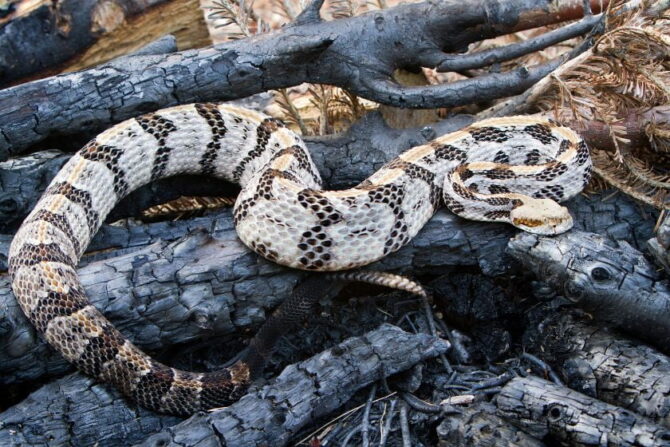
- Scientific Name: Crotalus horridus
- Classification: Reptile
- Habitat: Mountainous forests, hilly forests, agricultural fields, hardwood forests, lowland cane thickets, pine forests, swamps, river floodplains
- Primary Diet: Carnivore
- Conservation Status: Least Concern
Walk as you like in western Kansas, but carefully thread as you go farther east after the Flint Hills because you have a high chance of encountering the Timber Rattlesnake.
This rattlesnake is a highly venomous pit viper, with an extremely potent, hemotoxic venom enough to kill a human.
It has an intimidating appearance and a fearsome reputation, being one of the United States’ most giant venomous snakes and one of North America’s deadliest.
The Timber Rattlesnake’s venom is hemotoxic, causing pain, swelling, and necrosis.
5. Bison
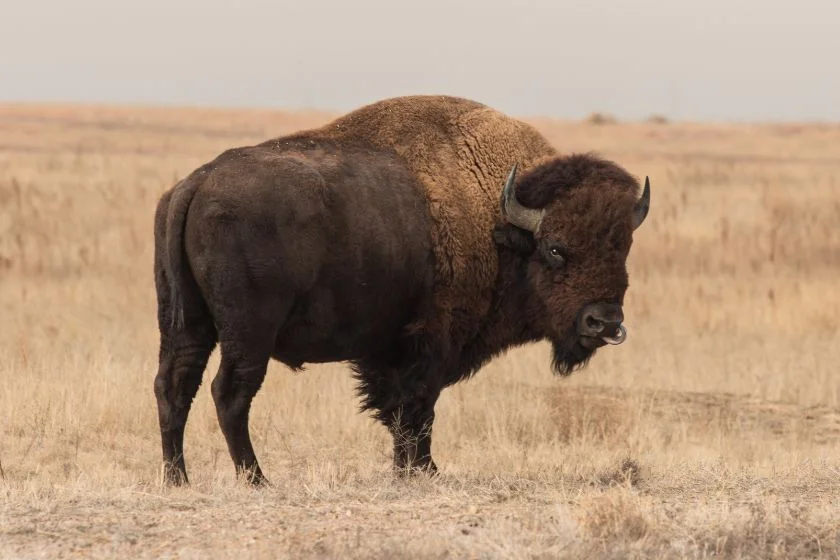
- Scientific Name: Bos bison
- Classification: Mammal
- Habitat: North America’s grasslands and open savannas
- Primary Diet: Herbivore
- Conservation Status: Near Threatened
The Bison is Kansas’s official state animal and hosts the United States fifth-largest bison population.
You may find them roaming private lands or within parks like the Yellowstone National Park.
However, it is best to observe them from a distance as bison are irritable and aggressive.
Bison are powerful and fast with rock-solid horns. They are North America’s largest mammals, weighing 2,000 pounds or more and reaching six feet in height.
Many human activities seem threatening to bison and could prompt their defensive instincts to charge at a human without warning.
Their irritability prompts them to react when they sense danger around calves, and feel harassed, provoked, or threatened.
6. Prairie Rattlesnake

- Scientific Name: Crotalus viridis
- Classification: Reptile
- Habitat: Foothills, grasslands, plains, mountains
- Diet: Carnivorous
- Conservation Status: Least Concern
The Prairie Rattlesnake is typical to western Kansas’s open rocky areas, prairies, and farmlands.
It is a dangerous snake with painful venomous bites that may be lethal to a healthy adult.
Victims may have difficulty breathing, impaired vision, or feel nauseated; they may suffer shock, low blood pressure, and internal bleeding in severe cases.
Fortunately, the Prairie Rattlesnake preys on rodents and other small animals, including prairie dogs and small birds.
7. Cougar
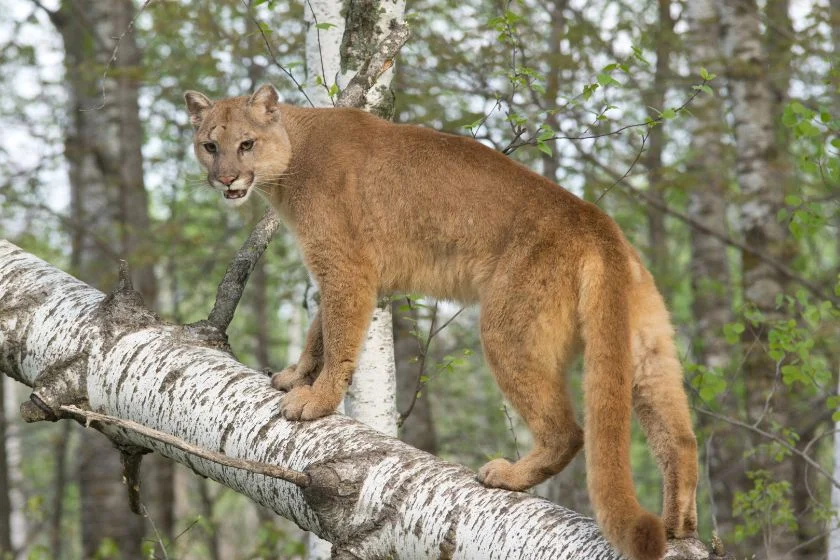
- Scientific Name: Puma concolor
- Classification: Mammal
- Habitat: Steep, rocky canyons, coastal forests, deserts, mountainous terrain
- Diet: Carnivore
- Conservation Status: Least Concern
There are no cougar breeding populations across Kansas, but the Kansas Department of Wildlife, Parks & Tourism has occasionally confirmed cougar sightings in the state.
Cougars rarely attack humans, and there are no confirmed cougar attacks in Kansas.
However, they are wild cats with powerful forearms and paws and muscular jaws and should never be underestimated.
You would not wish to run into a cougar in the wild after realizing they have a bite force of about 400 PSI which is more than enough to kill a human.
8. Massasauga Rattlesnake
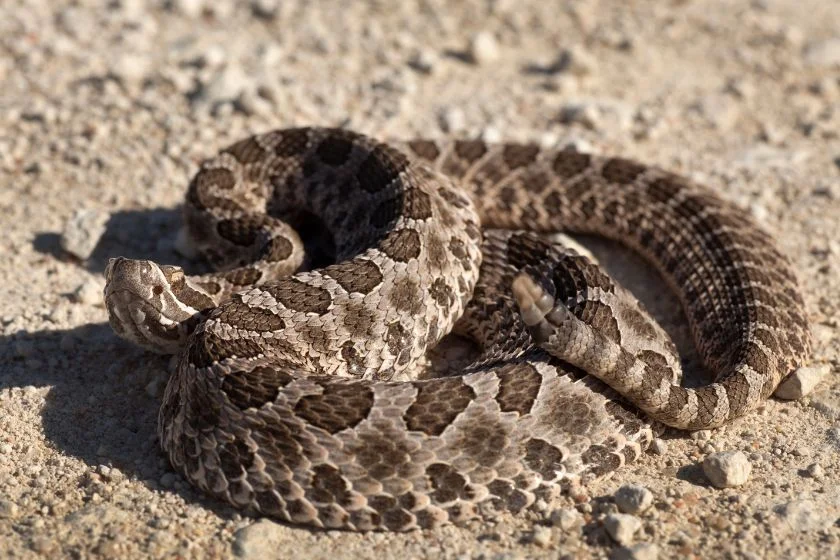
- Scientific Name: Sistrurus catenatus
- Classification: Reptile
- Habitat: Wetlands, prairies, swamps, woodlands, tree roots, rock crevices
- Primary Diet: Carnivore
- Conservation Status: Least Concern
You would not only find the Timber Rattlesnake in eastern Kansas but the Massasauga.
It is a venomous rattlesnake species that you must be extremely cautious around.
Fortunately, there are very few fatality records from the Massasauga Rattlesnake’s bites because its teeth are too small to inject enough venom for terrible harm.
Nevertheless, bites can result in extreme health conditions as Coagulopathy (bleeding disorder) may occur after anti-venom administration due to the venom’s complexity.
9. Copperhead
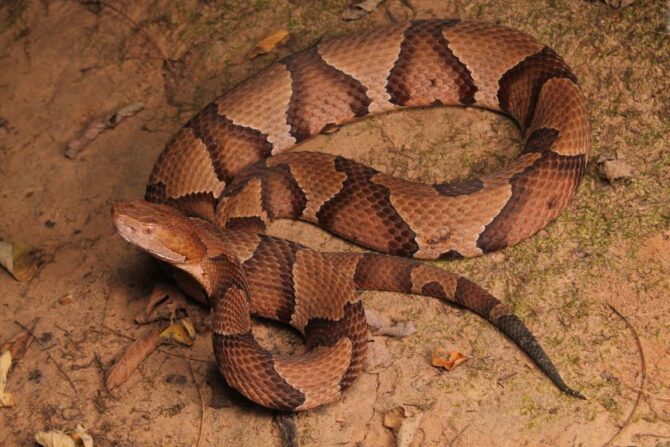
- Scientific Name: Agkistrodon contortrix
- Classification: Reptile
- Habitat: Deciduous forests, mixed woodlands, rock outcroppings, ledges, swampy regions, dens, limestone crevices
- Primary Diet: Carnivore
- Conservation Status: Least Concern
There are two Copperhead species in Kansas — the Eastern Copperhead and the Broad-Banded Copperhead; in fact, the Copperhead is Kansas’s most common venomous snake.
These snakes may be beautiful and scary but unlikely to attack humans because of their shy and reclusive nature.
The Copperhead ejects a hemolytic venom that breaks down red blood cells.
Its estimated dose is around 100 milligrams, amongst the least potent pit vipers, but its bites can be severe, resulting in nausea, vomiting, diarrhea, or labored breathing.
10. Deer

- Scientific Names: Cervidae
- Classification: Mammal
- Habitat: Rain forests, wetlands, grasslands, deciduous forests, arid shrublands, and mountains.
- Diet: Herbivore
- Conservation Status: Not Extinct
The White-Tailed Deer and Mule Deer are the two deer species native to Kansas.
Both species’ populations reached an estimated 700,000 in 2020, causing considerable damages, particularly deer-vehicle crashes, according to the Kansas Department of Wildlife and Parks (KDWP).
Like all wild animals, deer are potentially dangerous to humans in confinement or when threatened.
Bucks defend themselves with antlers that could lead to puncture wounds, bruising, other forms of injury, or even death, while does protect their fawns and could charge at you if you get too close.
Kansas Wildlife Safety Tips
- Be careful around dark areas: It is best to stay away from dark, undisturbed areas where the Black Widow likes to nest, and be careful around outdoor objects that you have not used for a long time.
- Watch wildlife from a safe distance: It will be best never to follow or approach wild animals due to their unpredictability and defensive instincts. Animals like bison are irritable and feel threatened by many human activities. Wildlife may quickly feel concerned or threatened and, in their defense, harm people or themselves in an attempt to escape.
- Use your bright lights to help you detect deer meters away: Deers are likely to cross highways at dawn and dusk when you rely on your headlamps rather than natural light. Therefore, it will be best to put on your full beam headlights to see better, except when there is oncoming traffic. Drive slowly, and anticipate elks or deer, particularly during the mating season (mid-October – mid-January). Expect to see more deer or a herd if one crosses the road, and do not swerve to avoid a deer as it could lead to a fatal accident.
Wrap Up
Kansas, The Sunflower State, is as beautiful as it could be, overflowing with the breathtaking beauty of undomesticated nature.
Nevertheless, some of its untamed animals pose significant risks to your life, making it essential to give them a wide berth.






